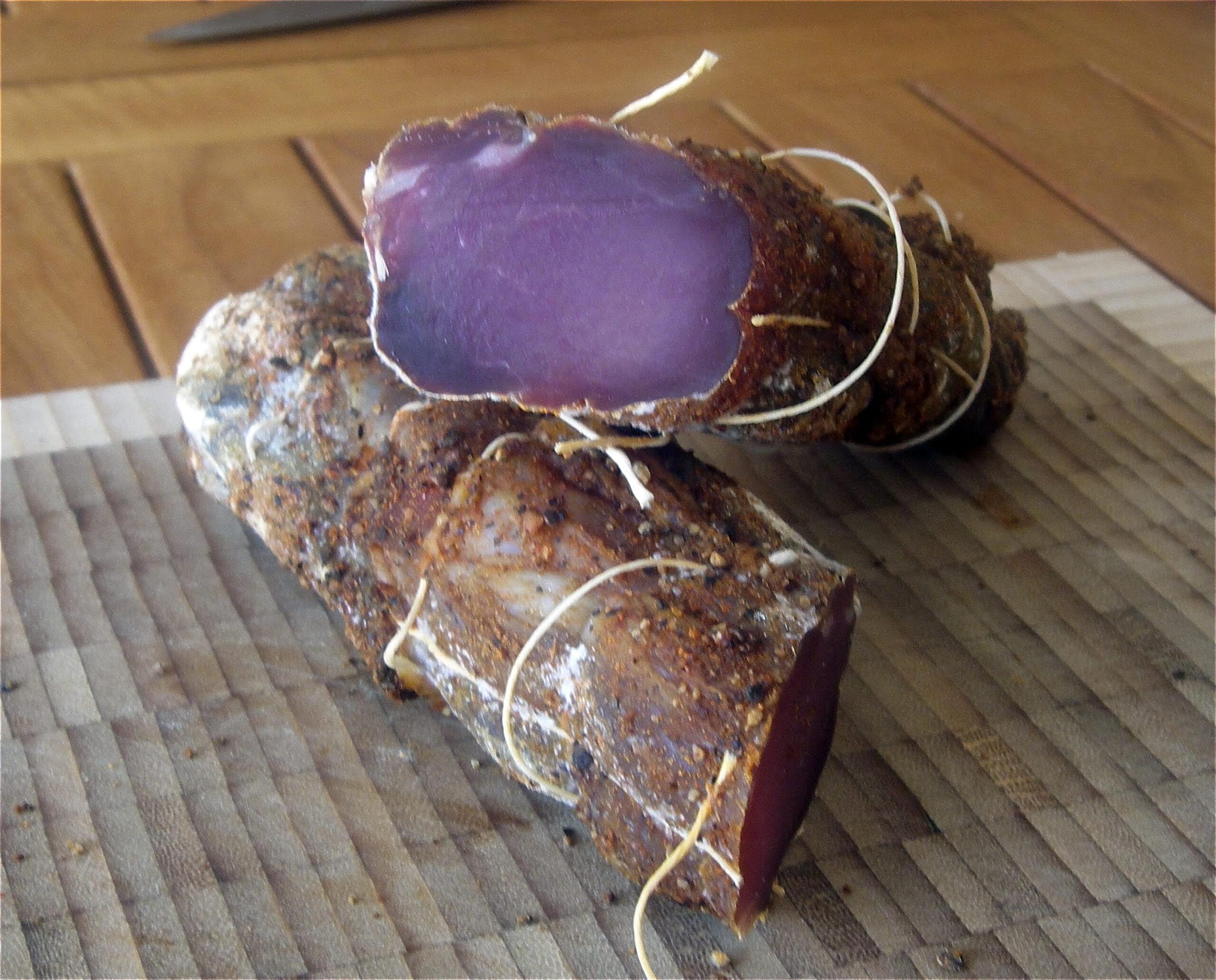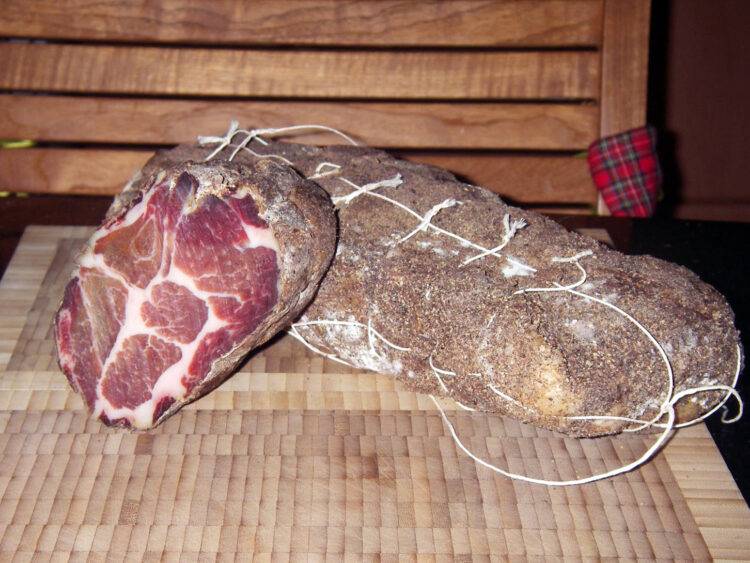A delicious homemade coppa that will wow your guests at any festive aperitif
Coppa is a traditional charcuterie made from pork neck, celebrated for its deep flavour and melt-in-the-mouth texture. The process starts with meticulous salting, then seasoning with spices and a splash of alcohol, followed by a long, slow dry-curing phase. Note: although some makers slip it into a casing, it is not a dry sausage; it is, in fact, a dried meat.
Making your own coppa lets you choose every ingredient, customise the flavour profile and keep an age-old craft alive—and the results are always rewarding.

Origins of Coppa
Born in Italy—in the regions of Emilia-Romagna, Lombardy and Piedmont—coppa has since crossed borders and found a home in Corsica and parts of southern France.
The name likely comes from the Latin “copa”, meaning “neck,” a tribute to the cut it’s made from. Traditionally, coppa was prepared in the cold winter months, when low temperatures naturally preserved the meat.

These age-old salting and drying techniques were originally devised simply to keep meat edible through the seasons. Today, coppa is a cornerstone of Italian and Corsican cuisine, prized for its aromatic complexity and its place in local food culture.
Tips for Perfect Homemade Coppa
Drying Time
For this recipe we use a quick, no-fuss way to calculate the salting time.
It’s straightforward and it works. If you prefer a more exact method—especially when vacuum-salting, where the spices listed in the next section can be added—use the formula below:
Measure the meat’s diameter in centimetres, halve it to get the radius, then add 1. A piece that measures 8 cm across: 8 ÷ 2 = 4; 4 + 1 = 5, so it needs 5 days in the fridge.
Vacuum Method & Spice Mix
For the vacuum method, which draws maximum flavour into the meat, prepare a spice mix with 4.5 % salt.
Per kilogram of meat
- 45 g salt, fine or coarse
- 22.5 g brown sugar (anywhere from 10 % to 50 % of the salt weight)
- 1 g ground black pepper 1 g ground juniper berries
- 0.5 g mixed spices
- Four-spice blend (readily available)
- 0.3 g finely chopped bay leaves
Quickly rub the meat with the spice mix, then vacuum-seal. Refrigerate for the time calculated above, massaging and turning the bag from time to time so the flavours soak in evenly.
You can certainly just add extra spices to the coarse salt in the basic recipe, but they won’t permeate the meat as thoroughly as they do with the vacuum method.
Recipe courtesy of Charcuterie Di Lorenzo

Authentic Italian Coppa
Ingredients
- 1 High-quality pork collar
- Coarse Guérande sea salt enough to fully bury the meat
- A splash of eau-de-vie or any clear spirit you enjoy
- Freshly ground black pepper or Espelette pepper
Procédé
- Cure the pork collar in salt for 24 hours per kilogram of meat.1 High-quality pork collar, Coarse Guérande sea salt
- Place the collar in a tilted container, completely buried in coarse salt so moisture can drain away.
- Once cured, rinse the collar under cold running water to wash off excess salt.
- Pat the meat dry, then massage it with the eau-de-vie.A splash of eau-de-vie
- Tie the collar with butcher’s twine, leaving a loop long enough for hanging.
- Roll the collar in the pepper until evenly coated.Freshly ground black pepper or Espelette pepper
- Hang the meat in a cool, airy place (8–14 °C/46–57 °F) for 4–6 months.
- The coppa is ready once it has lost 30–40 % of its original weight.
